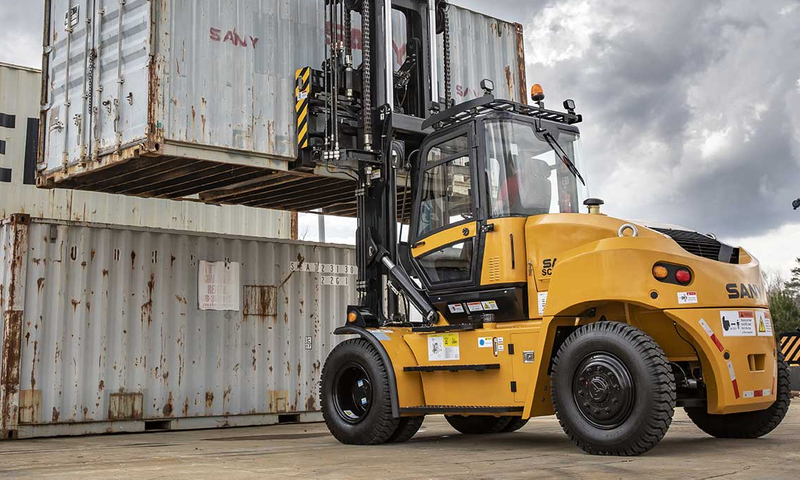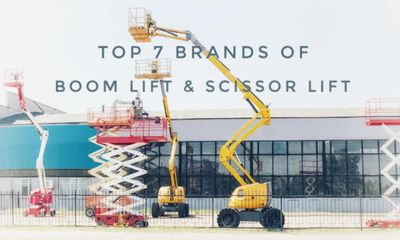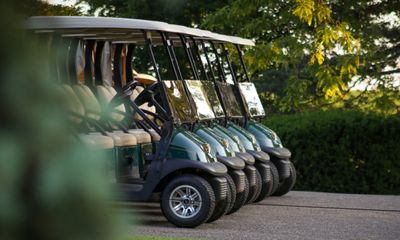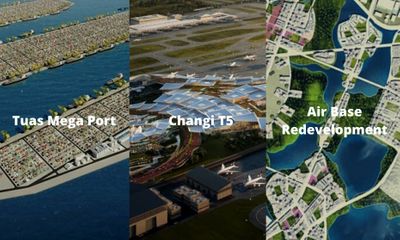© 2025 Powered by Antbuildz.com
© 2025 Powered by Antbuildz.com

The forklift is also called a lift truck, is one of the most commonly used pieces of equipment at the worksite. These powered industrial trucks are used to lift and transport loads with deft and precision. But just because they are common does not mean they are simple. With thousands of forklifts in Singapore estimated to be in operation, it is mandatory to ensure workers are trained on proper safety measures to be implemented prior to work.
Below are some simple safety tips to follow to ensure the safe operation of forklifts. Although these tips are simple and quite basic, they are a good starting point to support workplace health and safety guidelines.
Learn the Rental Tips to Choose the Right Forklift.

Forklifts should be thoroughly inspected before every use. Daily checks with the shift supervisor are recommended to identify and log any problems or defects. Any equipment that requires repair should never be operated. Some of the recommended checks include:

Be aware of the capacity of your forklift and any attachments used. Avoid hauling weight that exceeds the counterweight of the forklift. Overloading a forklift can cause the rear wheels to rise off the ground and the whole machine to fall over, causing injury to personnel and damage to the equipment and materials.

Before using a forklift, make sure your hands and shoes are completely dry and sit in a comfortable position with all the controls within reach. In addition to seating yourself securely, take the following steps before operating the forklift to increase your safety.
Each forklift has a center of gravity – the point where the weight has equal concentration – that it shares with the load it carries. Forklifts are built on a three-point suspension system, called the “ stability triangle” that operators must stay within to prevent it from tipping over. The heavier the load, the further out the center of gravity is from the load center, decreasing your forklift’s lifting capacity.

Drive your forklift within the designated speed limits. It is important to not stop, turn, change directions suddenly, or move fast when making sharp turns, as these actions can cause the forklift to tip over. If your forklift starts to dip, do not try to jump clear of the machine. It is recommended to stay in the vehicle, gripping the wheel, and bracing your feet.
Avoid standing or walking under a load, lifting mechanism, or forklift attachment, as loads can fall off on anyone positioned below it. Keep hands and feet clear away from the forklift mast, as a moving mast can cause serious injury.
It is important to keep equipment fully charged and fueled. Be sure to recharge and refuel in specially designated locations, which are usually well-ventilated and flame-free areas. Be diligent in switching off the equipment every time it’s being refueled.
At the end of the shift, be sure to always park the equipment in the designated and authorized areas. The construction company should make sure the parking areas do not block pathways or obstruct any exits or entrances. Fully lower the forks until they fit the floor, apply the parking brake, turn off the engine, and remove the key from the ignition.
These 11 safety tips above mentioned are significant to be considered and implemented when operating forklifts and can help prevent injuries, accidents, damage, and liability concerns.
We, Antbuildz.com are the first digital equipment rental platform in Singapore set to reinvent the traditional construction equipment rental into a truly touchless equipment rental experience. Visit antbuildz.com to search your preferred equipment such as Push Around, Boom lift, Generator, or even Scissor lift, check the price and rent it instantly over the platform here.
Remember to like and share our Facebook page! bit.ly/34MdSFh
Any Questions?
WhatsApp or Call Us for a FREE consultation on the most suitable equipment for your site. We’re more than happy to assist!
Related Articles

Top 7 Brands of Boom Lift and Scissor Lift
Scissor Lift, Boom lift, Vertical Man Lift, Spider Lift are all considered as un ...
Learn more
22 Jan , 2025

4 Types of Construction Contracts
A construction contract provides a legal binding agreement between the contracte ...
Learn more
22 Jan , 2025

6 Most Common Uses For Buggy Rental
When it comes to traversing to several locations within your site, The Buggy is ...
Learn more
22 Jan , 2025

Singapore's Top 3 Key National Projects
On 57th Singapore Birthday, Singapore Prime Minister Lee mentioned about 3 Natio ...
Learn more
22 Jan , 2025